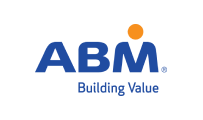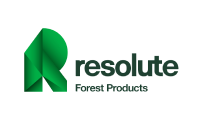Corporate sustainability has shifted from being a peripheral activity to a core driver of business resilience, competitiveness, and stakeholder trust. A recent survey by the Conference Board and ESGAUGE gathered insights from 70 U.S. and multinational companies, highlighting how sustainability teams are structured, how they collaborate with other business functions, and what best practices are emerging.
Why Structure Matters
How companies design and position their sustainability teams directly impacts whether environmental, social, and governance (ESG) initiatives become fully integrated into business decision-making. According to the research, most organizations are adopting a hybrid model — a lean central team sets strategy and governance, while distributed liaisons embed sustainability into daily operations.
This approach provides consistency while ensuring accountability at the business-unit level. It also reflects practical resource limitations: in over 60% of surveyed firms, the central sustainability team consists of just one to five full-time staff. By spreading responsibilities across functions, companies maximize impact with limited budgets.
Less common models include centralized structures (about 19%) and fully distributed teams (9%). Notably, no company surveyed reported a fully decentralized approach, underscoring the importance of coordinated governance in today’s regulatory and stakeholder landscape.
Anticipating Structural Adjustments
Half of the surveyed companies expect to adjust their sustainability structures within the next two years. While only 16% foresee major restructuring, 34% anticipate smaller refinements aimed at:
- Strengthening cross-functional collaboration
- Embedding ESG into finance, risk, and strategy
- Redistributing sustainability roles across business units
- Enhancing integration into core operations
The driving forces behind these adjustments are clear: companies want to align ESG with long-term strategy, build resilience, and comply with evolving regulations such as the EU’s Corporate Sustainability Reporting Directive (CSRD) and new climate disclosure rules in California.
Deeper Integration Across Functions
The study shows that while sustainability is moderately embedded in many areas—such as legal, communications, and procurement—enterprise-wide integration remains rare. Over the next two years, leaders expect stronger alignment with:
- Finance: Investor pressure and regulatory disclosure requirements are making finance a critical partner. ESG metrics must increasingly be “investor grade.”
- Procurement: Supply chain transparency and Scope 3 emissions reduction are now non-negotiable. Supplier contracts are evolving to include sustainability criteria.
- Risk Management: ESG risks like climate, biodiversity loss, and social instability are being added to enterprise risk registers.
- Operations: Efficiency, decarbonization, and waste reduction remain key levers for achieving measurable results.
- Innovation & R&D: Few firms currently connect innovation pipelines to sustainability goals—a major missed opportunity for competitive differentiation.
Governance and Accountability
One of the strongest findings from the survey is the effectiveness of cross-functional sustainability steering committees. These committees, often involving leaders across operations, finance, and compliance, provide formal governance and accountability.
Additionally, tying ESG goals to financial and operational KPIs ensures that sustainability is not treated as a side project but as a business imperative. Companies that integrate sustainability into performance evaluations and incentives tend to see stronger progress, although careful design is essential to avoid greenwashing concerns.
Addressing Talent Gaps
Even with progress on structure and integration, talent remains a challenge. Survey respondents identified three critical capability gaps:
- Financial modeling – making the business case for sustainability investments
- Change management – embedding ESG into organizational culture
- Data analysis – measuring and reporting progress with credibility
Budget constraints mean only 60% of companies plan to expand their sustainability teams in the next two years. Instead, many are prioritizing upskilling current employees, leveraging training programs, and building partnerships to close expertise gaps.
Professional Certification Opportunities
At CSE, we see growing demand for sustainability professionals who can bridge technical ESG knowledge with financial and strategic acumen. Training and certification programs are key to addressing these gaps and preparing leaders to meet rising expectations.
The evolution of sustainability teams reflects a larger shift: ESG is no longer just about compliance or reputation—it is about long-term business value creation. Companies that align governance, talent, and cross-functional integration will be better positioned to navigate regulatory complexity, respond to investor demands, and seize opportunities in the sustainable economy.
As the Conference Board research makes clear, the next phase of corporate sustainability will depend on embedding ESG into the heart of business strategy. For organizations, the challenge now is not whether to act, but how to act with speed, credibility, and impact.
Stay tuned for our upcoming Certified Sustainability (ESG) Practitioner cohorts. Learn how to lead your organization’s ESG strategy with credibility.
Explore programs, affiliation opportunities or contact us at info@cse-net.org







